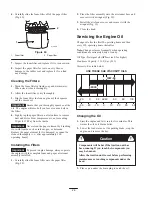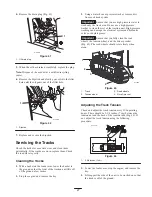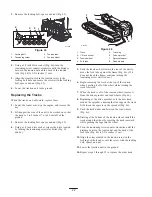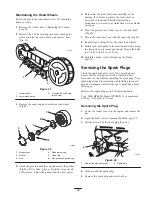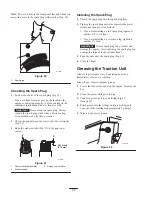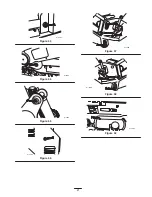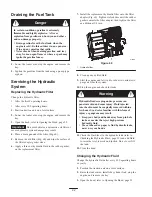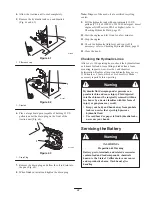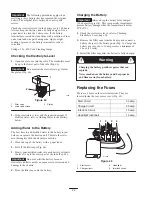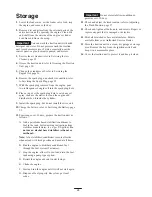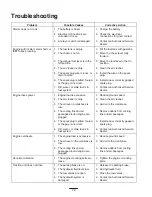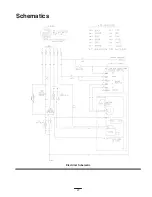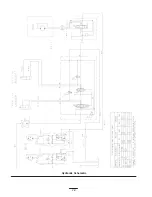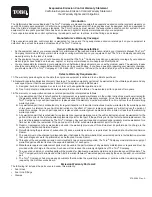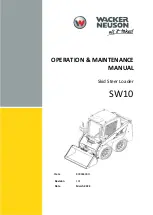
32
Draining the Fuel Tank
Danger
In certain conditions, gasoline is extremely
flammable and highly explosive. A fire or
explosion from gasoline can burn you and others
and can damage property.
•
Drain gasoline from the fuel tank when the
engine is cold. Do this outdoors in an open area.
Wipe up any gasoline that spills.
•
Never smoke when draining gasoline, and stay
away from an open flame or where a spark may
ignite the gasoline fumes.
1.
Lower the loader arm, stop the engine, and remove the
key.
2.
Syphon the gasoline from the tank using a pump type
syphon.
Servicing the Hydraulic
System
Replacing the Hydraulic Filter
Change the hydraulic filter:
•
After the first 8 operating hours.
•
After every 200 operating hours.
1.
Position traction unit on a level surface.
2.
Lower the loader arm, stop the engine, and remove the
key.
3.
Open the hood; refer to Opening the Hood, page 23.
Important
Do not substitute an automotive oil filter or
severe hydraulic system damage may result.
4.
Place a drain pan under the filter (Fig. 60).
5.
Remove the old filter (Fig. 60) and wipe the surface of
the filter adapter gasket clean.
6.
Apply a thin coat hydraulic fluid to the rubber gasket
on the replacement filter.
7.
Install the replacement hydraulic filter onto the filter
adapter (Fig. 60). Tighten it clockwise until the rubber
gasket contacts the filter adapter, then tighten the filter
an additional 3/4 turn.
1
m–7465
Figure 60
1. Hydraulic filter
8.
Clean up any spilled fluid.
9.
Start the engine and let it run for about two minutes to
purge air from the system.
10.
Stop the engine and check for leaks.
Hydraulic fluid escaping under pressure can
penetrate skin and cause injury. Fluid injected
into the skin must be surgically removed within a
few hours by a doctor familiar with this form of
injury or gangrene may result.
•
Keep your body and hands away from pin hole
leaks or nozzles that eject high pressure
hydraulic fluid.
•
Use cardboard or paper to find hydraulic leaks,
never use your hands.
Warning
11.
Check the fluid level in the hydraulic tank (refer to
Checking the Hydraulic Fluid, page 12) and add fluid
to raise the level to mark on dipstick. Do not over fill
the tank.
12.
Close the hood.
Changing the Hydraulic Fluid
Change the hydraulic fluid after every 400 operating hours
or yearly.
1.
Position the traction unit on a level surface.
2.
Raise the loader arm, install the cylinder lock, stop the
engine, and remove the key.
3.
Open the hood; refer to Opening the Hood, page 23.
Содержание 22308
Страница 6: ...6 Slope Chart Note This page may be copied for personal use only M 4402...
Страница 37: ...37 Schematics Electrical Schematic...
Страница 38: ...38 Hydraulic Schematic...









